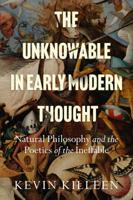Publisher's Synopsis
This work treats in detail about the relationship among the central authority (the Emperor), the regent and the various state councils and local parliaments. It is an attempt to analyze the complex power relationships among the ruler, the other executive and legislative offices. It begins with the psychological profile of Philip II, the Emperor, the mind in center of all important decisions. It portrays also the buoyant personality of people like William of Orange and his peers who fought with all diplomacy and duplicity for the sovereignty of their lands. Iconoclasm was the act of resistance of these men which they made execute by bands of hostile citizens. Inquisition was the response of the central authority. Inquisition is depicted in this work in its very detailed horror. It was used for pure religious reasons, but also as means of repression by the authorities of the Emperor. In this account, Schiller brings to us his interest for another woman of power, Margaret of Parma, from his very own standpoint. This woman was brought up to be a great regent, but History did not retain her name. Schiller gives us all the details about her skillfulness and frailties to maintain herself at the head of imperial vassals who, actually, were her fiercest opponents. A particular mention should be given to the various advisers and writers that Schiller gives us the descriptions of in this work. Starting from the very powerful Cardinal Granville, counselor to the Emperor of Spain to Erasmus (with the local parliament in the Netherlands), to name just a few. He also exposes in this text some aspects of the secret writer which has still some validity to this day, and infers, at the end of this long research, that the whole History of Europe would certainly have been different should Margaret of Parma not have as a writer, the very famous Nicolas Machiavelli.











